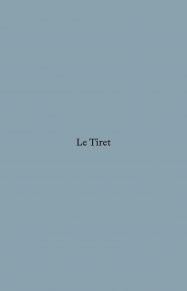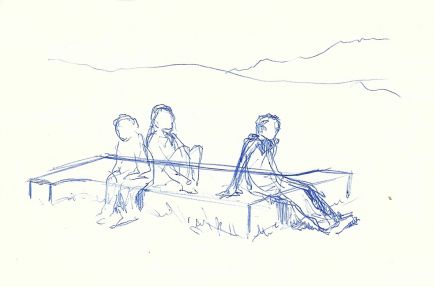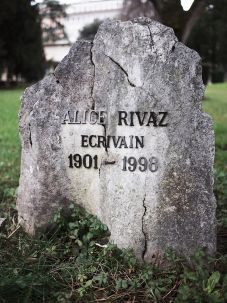Le Tiret
Sculpture, booklet and public events
Triennale Bex & Arts 2020
22.6.–18.10.2020
Conceived for the Bex & Arts Triennial, this sculpture appears as a typographic sign integrated in the landscape: a 4 meters long « hyphen » carved in a granit stone from the Alps, to be discovered in the Szilassy garden.
This gesture pays tribute to Swiss novelist Alice Rivaz (1901 - 1998), who wrote about the hyphen separating the dates of birth and death on our graves, evoked in several of her short stories. While it is supposed to « contain the entirety of one’s life », yet the dash cannot testify about the richness of experiences and relations that composed our existence. Furthermore, it highlights the particular tension between the « entry » and the « exit », between the various places and the different times that we will cross during our journey. A movement which is also difficult, constituted by « a succession of thick layers that we need to pierce » – attesting both to the condition of women in her time and to the position of subalterns, of humbles, of the people that are prevented to achieve their basic aspirations, and to whom Alice Rivaz attempted to give a voice.
The sculpture also functions as a simple bench, inviting the public for a pause, and occasionally hosting a series of public discussions and readings. It is accompanied by a 44 pages booklet, including fragments of interviews with specialists of the work of Alice Rivaz.
In her novels and short stories, Alice Rivaz had resolutely turned away from the great figures and events of history to focus on the unfinished nature of life, on the stories and aspirations of the voiceless. Her remarkable commitment to women's rights and the dignity of the most vulnerable did not involve a theoretical or overarching approach, but rather adopted an incarnated perspective, as close as possible to the people and issues addressed. Recognized as a major Swiss novelist from the 20th century, and a feminist pioneer in French-language literature (her novel La Paix des Ruches, published in Paris in 1947, preceded Simone de Beauvoir's Le Deuxième sexe by two years), she nonetheless occupies a surprisingly discreet place in the collective memory, as evidenced by the modest design of her tomb in Geneva's Cimetière des Rois.
Based on a cast of the actual hyphen from Alice Rivaz's grave, this sculpture takes up a recurring motif in the novelist's work (notably in her short stories “Une Marthe” in 1944 and “La Bonne” in 1985) and gives it a dimension that would finally – and by way of homage – assume the status of a monument. A monument that sees its significance not as a mere symbol, but rather as an image of thought that Alice Rivaz left us as legacy in order to question our own time, torn between heritages to rethink and futures to re-imagine. The hyphen becomes a shelter, a platform or a simple bench, to host a series of meetings, interviews and readings with writers, philosophers, educators, musicians, activists, performers and other actors committed to the causes dear to the novelist.
Initiated during the 2020 Bex & Arts Triennial, this approach has continued since 2021 in the park of Villa Bernasconi - art center in Lancy. The park now houses the sculpture, as well as a program of annual meetings organized by the Institut d'étude des intervalles (iEi) until 2031: i-e-i.net
A coproduction by the Bex & Arts Triennial and Villa Bernasconi – centre d'art
Supported by the City of Geneva, the City of Lancy, and Ongaro & Co S.A.
Sculpture conceived by Aurélien Gamboni and realized by Vincent Du Bois, studio Cal-AS
Booklet designed by Schaffter Sahli, and printed at 800 copies by Noir sur Noir, Geneva



